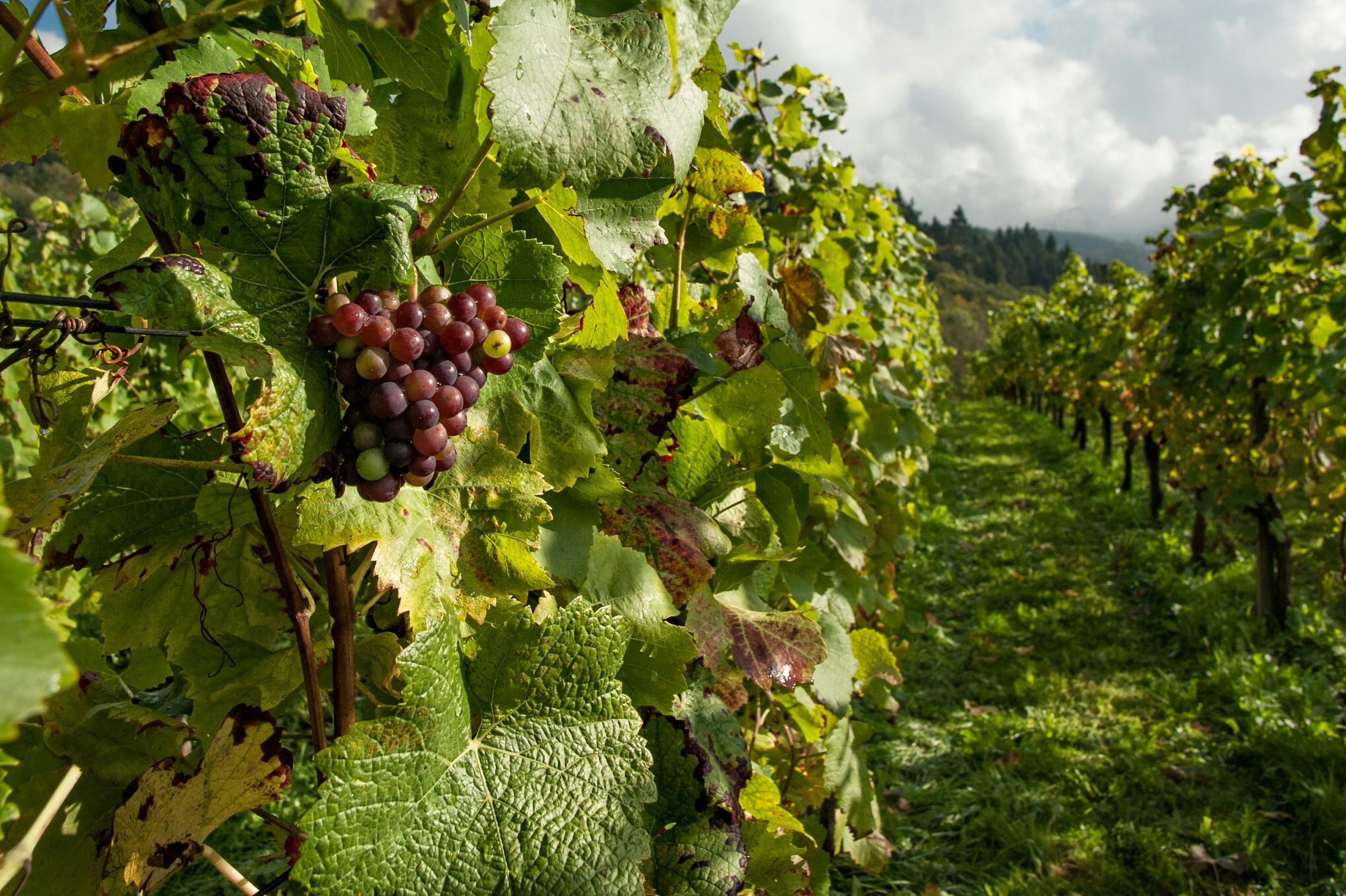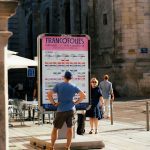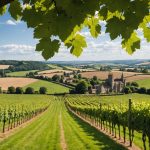Nestled between Lyon and Mâcon, the Beaujolais region offers an authentic French wine experience that captivates travelers worldwide. According to recent data from the Beaujolais Wine Board, over 2.3 million visitors explored these rolling vineyards in 2025, drawn by centuries-old winemaking traditions and the region’s warm hospitality.
What makes a journey through Beaujolais so unforgettable? Beyond the famous Gamay grape varietals, you’ll discover medieval villages, family-run domaines, and the celebrated beaujolais nouveau day 2025 festivities that transform the entire region into a vibrant celebration of wine culture and local pride.
Also to read : France travel guide: your essential 2025 planning companion
The Heart of This French Wine Paradise
Nestled between Lyon and Mâcon, the Beaujolais region stretches across rolling hills where granite soils create the foundation for exceptional wines. This compact wine paradise spans just 55 kilometers from north to south, yet encompasses an extraordinary diversity of terroirs that have captivated wine lovers for centuries.
The region’s crown jewels are its ten appellations, each offering a distinct personality shaped by unique microclimates and soil compositions. From the powerful, age-worthy wines of Windmill to the elegant, floral expressions of Fleurie, these crus showcase the remarkable versatility of the Gamay grape on granite terroir.
Additional reading : Discover the Excitement: Explore Traditional Sheep Shearing in Wales – Your Ultimate Guide!
Morgon stands out with its decomposed schist soils, producing wines with exceptional aging potential and earthy complexity. Meanwhile, the lighter appellations like Chiroubles offer delicate, perfumed wines that capture the essence of high-altitude vineyards. This geological diversity, combined with the region’s continental climate softened by Mediterranean influences, creates the perfect conditions for producing wines that range from fresh and fruity to structured and complex.
Where to Experience Authentic Wine Culture
The heart of Beaujolais wine culture beats strongest in its historic domains and family-run cellars. These authentic venues offer more than tastings—they provide genuine connections to centuries-old winemaking traditions that define this remarkable region.
The most rewarding experiences await at family estates where passionate vintners share their craft personally. Domaine des Terres Dorées and Château de la Chaize exemplify this intimate approach, offering guided tours through ancient cellars and vineyard walks that reveal the secrets behind exceptional cru wines.
- Historic cooperative cellars like Cave de Fleurie showcase traditional winemaking methods passed down through generations
- Small-scale producers in Morgon and Moulin-à-Vent offer personalized tastings with direct access to winemakers
- Village wine museums in Beaujeu and Villié-Morgon provide cultural context before vineyard visits
For optimal experiences, visit during harvest season (September-October) when vineyards buzz with activity. Reservations are essential, especially for weekend visits. Spring months offer quieter tastings with blooming vineyard views, perfect for photography enthusiasts and those seeking peaceful wine discoveries.
Cultural Treasures Beyond the Vineyards
The Beaujolais region offers a rich cultural tapestry that extends far beyond its celebrated wines. Medieval villages like Oingt, perched on golden stone hills, transport visitors back centuries with their perfectly preserved architecture and cobblestone streets that echo with history.
Pérouges stands as another jewel, its fortified walls encircling a maze of artisan workshops and traditional restaurants where recipes haven’t changed for generations. The village’s weekly market bursts with local specialties, from artisanal cheeses to handcrafted pottery, creating an authentic French experience.
Cultural festivals punctuate the calendar throughout the region. Summer brings music festivals in ancient courtyards, while autumn celebrates harvest traditions with folk dancing and storytelling. The annual Fête des Crus transforms entire villages into open-air galleries where local artists display their work alongside wine tastings.
The regional gastronomy deserves equal attention to the wines. Traditional Lyonnaise bouchons serve hearty specialties like coq au vin and saucisson de Lyon, while modern bistros reinterpret classic recipes with contemporary flair. These culinary experiences create perfect pairings with cultural exploration, offering visitors a complete immersion into Beaujolais heritage.
Planning Your Perfect Beaujolais Adventure
The harvest season from September to November offers the most enchanting experience in Beaujolais, when vineyards burst with activity and the famous Beaujolais Nouveau celebrations begin. Spring months from April to June provide equally rewarding visits, with blooming vines and pleasant weather perfect for hiking through the golden stone villages.
Getting to Beaujolais couldn’t be more convenient. From Lyon, just 45 minutes north by car or regional train, you’ll find yourself immersed in wine country. Paris visitors can reach the region in under three hours via high-speed TGV to Lyon, then continue by rental car for maximum flexibility exploring the winding vineyard routes.
A three-day stay allows you to savor the region properly. Plan your first day exploring Morgon and Fleurie villages, your second discovering Moulin-à-Vent’s prestigious vineyards, and your third enjoying Beaujeu’s historic charm. Charming bed-and-breakfasts nestled among the vines offer authentic experiences, while luxury hotels in Villefranche-sur-Saône provide elegant bases with easy access to all ten crus.
What Makes These Wines So Special
The magic of Beaujolais wines lies in their unique production methods that have been refined over centuries. Unlike most red wines, Beaujolais employs a distinctive fermentation technique called macération carbonique, where whole grape clusters ferment in a carbon dioxide-rich environment before traditional crushing begins.
This traditional method creates wines with remarkably fresh, fruity characteristics that set them apart from their Burgundian neighbors to the north. The Gamay grape, which thrives exclusively in Beaujolais’ granite soils, produces wines with bright cherry flavors, silky tannins, and an unmistakable lightness that makes them incredibly food-friendly.
What truly distinguishes Beaujolais from other French wine regions is this combination of terroir and technique. While Bordeaux focuses on power and Burgundy on elegance, Beaujolais celebrates pure fruit expression and immediate pleasure. The region’s ten crus each showcase different aspects of Gamay’s personality, from the delicate florals of Fleurie to the structured complexity of Moulin-à-Vent.
This distinctive identity makes Beaujolais wines perfect ambassadors for French winemaking traditions while remaining refreshingly approachable for wine enthusiasts at every level.
Your Beaujolais Questions Answered
What are the best vineyards to visit in the Beaujolais region?
Visit Château des Jacques in Moulin-à-Vent, Domaine de la Madone in Fleurie, and Georges Duboeuf’s Hameau Duboeuf wine park. These estates offer exceptional tastings, stunning vineyard views, and authentic Beaujolais experiences.
When is the best time to visit Beaujolais for wine tasting?
September to November offers harvest season excitement, while spring (April-June) provides comfortable weather and blooming vineyards. Beaujolais Nouveau Day in November celebrates the year’s first wine release.
What cultural activities can I do in Beaujolais besides wine tasting?
Explore medieval villages like Oingt, visit Lyon’s UNESCO sites, discover local markets, enjoy hiking trails through golden stone hamlets, and experience traditional Bouchon restaurants serving authentic regional cuisine.
How do I get to Beaujolais from Lyon or Paris?
From Lyon, drive 45 minutes north or take regional trains to Villefranche-sur-Saône. From Paris, take the TGV to Lyon (2 hours), then connect by car or local transport.
What makes Beaujolais wines different from other French wines?
Beaujolais uses Gamay grapes and carbonic maceration, creating fruity, light-bodied wines. The region’s granite soils and unique winemaking process produce distinctively fresh, approachable wines perfect for immediate enjoyment.











